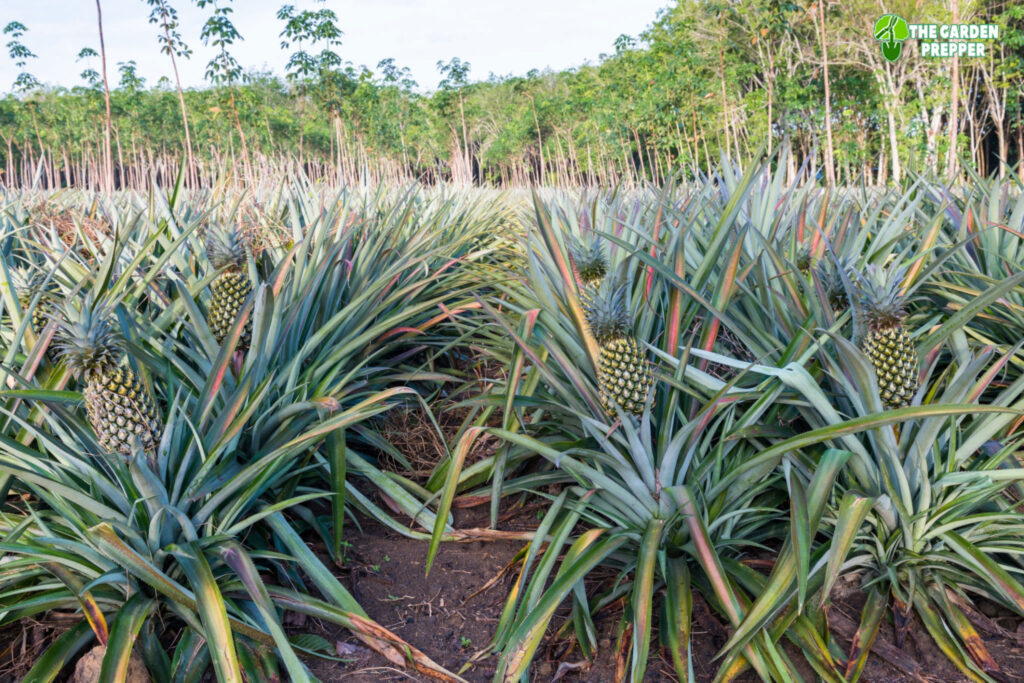Pineapples are a well-loved fruit that can be eaten on their own or added to various savory or sweet dishes. That’s why many people would love to plant these bad boys to harvest and enjoy eating. Plus, the plants’ appearances alone give a tropical vibe to your garden.
With that in mind, you’re probably wondering what happens after harvesting your first pineapple. Do pineapple plants keep producing fruit?
Find out if it does or not!

Do Pineapple Plants Keep Producing Fruit
Pineapples are perennial plants that are part of the Bromeliaceae family. This plant can take an average of 2-3 years to go through the fruit crop cycle, which takes between 32-46 months to complete and harvest. While that’s a pretty long cycle and a long wait for a pineapple fruit, it’s definitely worth the time and effort!
That said, these plants flower once, producing one pineapple. Unfortunately, the pineapple plant would die after its fruits. Well, sort of.
The pineapple plant won’t fruit more than once. To be more specific, it is the mother plant that will never fruit again.
Just one pineapple, really?
Wait! While pineapple plants would die after the cycle, the mother plant would still continue producing suckers, known as ratoons. Ratoons are little plantlets growing between the leaves of your main, mature pineapple plant as its flowers and fruits.
While the mother plant will slowly die after fruiting finishes, the large suckers or ratoons developed will continue growing, eventually producing new fruits.
Caring for the New Generation
So you can say that these plants would react similarly as ornamental bromeliads, dying back and producing a new generation.
Because the tropical pineapple plant would grow outside USDA zones 11-12 naturally, many people would grow them indoors as houseplants. If they are grown outdoors, then the ratoons can be left outdoors and continue growing naturally. However, plants grown in containers end up becoming crowded, so they need to be repotted after the mother plant begins dying back.
Remove the ratoons by grasping them at their base, twisting them very carefully from their mother plant. Once you have successfully removed the ratoons, plant them in a 4-gallon pot that contains moist soil with excellent drainage.
If ever the suckers or ratoons stay on the mother plant, it will end up having a ratoon crop. This means that the crop will mature, producing fruit, but these plants would crowd each other out. It will then become a competition for all these growing ratoons as they try to get as much water, light, and nutrients as necessary for their growth.
Because of the overcrowding and high competition, the second crop of pineapples will end up being even smaller than the one compared to your mother plant. So make sure you separate the ratoons and keep them from crowding, especially when growing indoors.
Wrapping It Up
When it comes to harvesting pineapples, you shouldn’t expect them to fruit again after the first time. While that may be devastating on your part, especially with the long period you have to wait as it grows and develops, it’s possible to produce new fruit through the mother plant’s ‘children’! You just have to continue to care for these suckers well and harvest your fruit correctly.
Hopefully, you learned a lot about pineapples and their fruit production. When you are planting pineapples, keep this information in mind and make sure you harvest your pineapple fruits well to reap what you sow. Happy gardening!